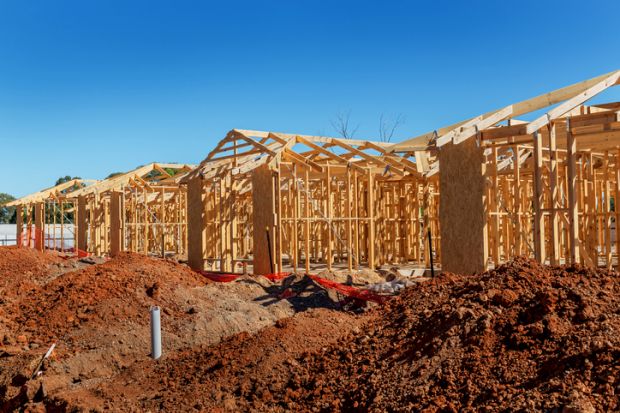Governments, universities and developers need to “think more aggressively and innovatively” about how to lodge ballooning numbers of international students, a Sydney forum has heard.
Neil Morris, director of student well-being at UNSW Sydney, said his university had on-campus residences for only about 2,000 of its 22,000 foreign enrolments. With Australia’s overseas student numbers now exceeding pre-pandemic levels, housing them can only become more difficult.
Mr Morris said authorities needed to find new ways to tackle the “wicked problem” of accommodating students, retirees and essential workers. He said local council regulation of student housing was circumscribing supply.
One approach was to tap the “untouchable land base” of crown estates, including “interesting” government holdings on the fringes of Sydney’s central business district. Mr Morris highlighted the possibilities raised by the New South Wales government’s recent decision to reclaim nine holes of an inner-city golf course for general use.
“We might be able to add a few thousand beds on the periphery,” he told the Australia China Education and Tourism Symposium at Sydney Town Hall. “Enhance that… beautiful parkland with a vibrant community of the most wonderful 18 to 25-year-old kids on the planet.”
The symposium heard that the mainland Australian state capitals only had enough purpose-built student accommodation to house between 9 and 15 per cent of their globally mobile students. This compared with around 30 per cent in London, 40 per cent in Birmingham and Manchester and 55 per cent in Liverpool.
Conal Newland, head of operational capital markets with property agency Savills Australia and New Zealand, said the “rebound” in foreign enrolments had been so strong that universities had “ripped up” 10-year accommodation strategies after just four or five years.
He said strong pre-coronavirus growth in dedicated student accommodation had crashed since the pandemic. New provision of affordable student housing was “almost non-existent” – particularly in Sydney, “the most difficult market to deliver purpose-built student accommodation”.
Mr Newland said purpose-built student rooms in Melbourne were typically around nine square metres, compared with 13, 18 or even 20 square metres in Sydney. “The nine-square-metre room, designed and delivered well, can actually still provide a very good level of accommodation – but at a much cheaper price point.”
He said that, although Sydney land prices had not increased significantly in the past few years, building costs had risen by 30 to 40 per cent. “The recipe that’s required to allow developers to make a reasonable profit and build new student accommodation – that’s got a lot more difficult.”
David Riordan, CEO of the Public Education Foundation, highlighted the “under-utilisation of government buildings” as a potential source of housing. But Geoff Denison, president of the Student Accommodation Association, said converting buildings was neither cheap nor a “quick fix”.
“The refitting of buildings is probably an 18-month kind of timeline,” he told the symposium. “The development of new projects would be a three-year timeline.”
Mr Denison said institutions needed to be more upfront in discussing housing with governments and developers. “There’s a common misconception that purpose-built student accommodation is always high price, but…if you have participation from education providers, you can customise developments…for a particular price point. We have a great opportunity to participate as an industry in developing a short-term strategy and a long-term strategy.”
Register to continue
Why register?
- Registration is free and only takes a moment
- Once registered, you can read 3 articles a month
- Sign up for our newsletter
Subscribe
Or subscribe for unlimited access to:
- Unlimited access to news, views, insights & reviews
- Digital editions
- Digital access to THE’s university and college rankings analysis
Already registered or a current subscriber? Login










